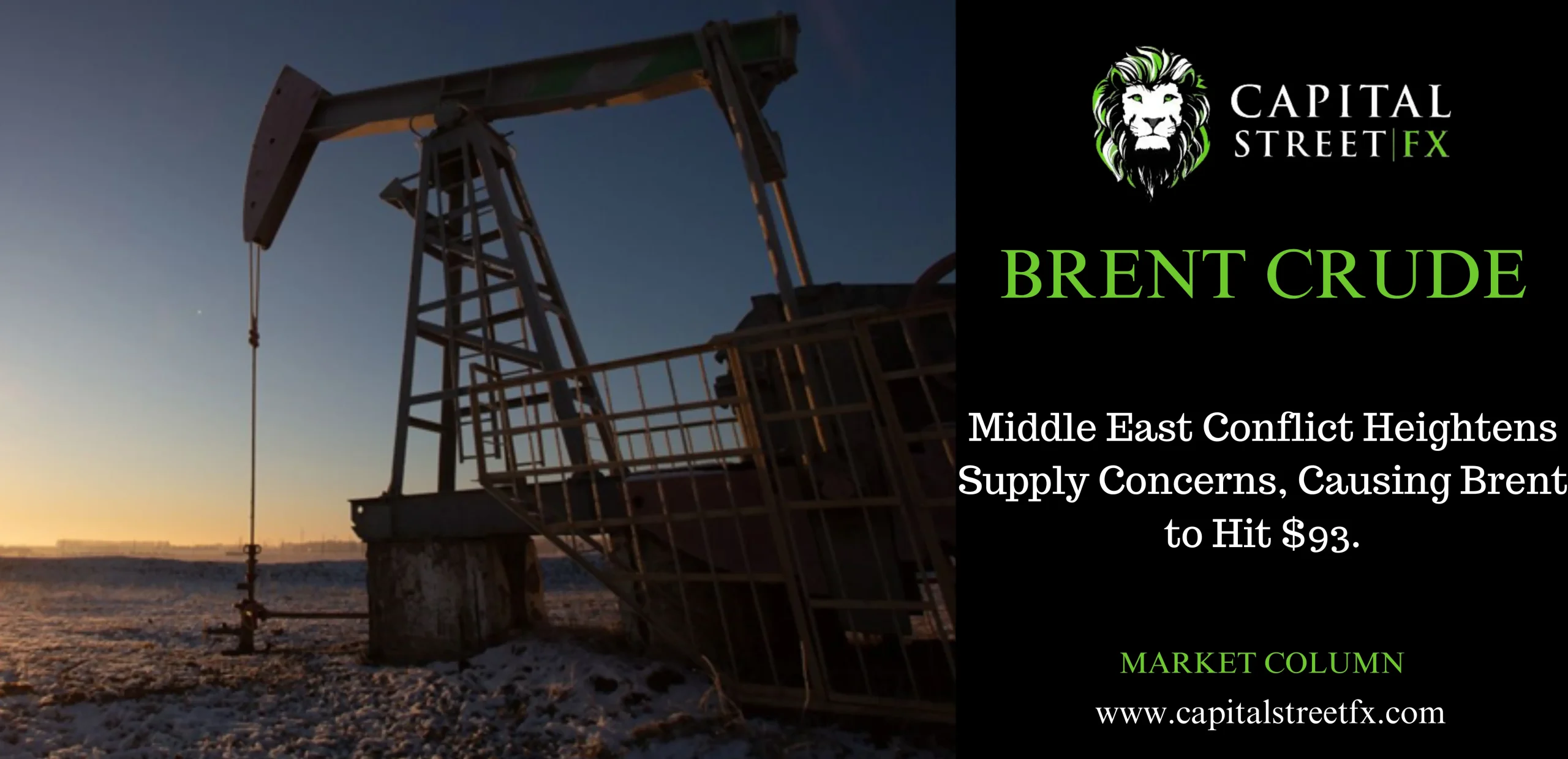Middle East Conflict Heightens Supply Concerns, Causing Brent to Hit $93.
The Middle East, a region often at the epicenter of global geopolitical tensions, is once again in the spotlight, and this time, it’s causing significant ripples in the oil market. As Iran calls for an oil embargo on Israel, the global oil benchmark Brent has surged to $93 per barrel, raising concerns about the stability of oil supplies.
Factors Contributing to the Increase in Oil Prices
The surge in oil prices can be attributed to several key factors. Firstly, it’s important to consider the intricate dance of supply and demand in the oil market. The global appetite for oil continues to be insatiable, and even minor disruptions can send shockwaves through the industry.
Geopolitical factors have also played a crucial role. Recent events in the Middle East have created uncertainty, which is the enemy of oil markets. The situation in the region has become increasingly tense, leading to a spike in oil prices.
Brent Crude Futures and WTI Futures
To understand the current situation better, it’s essential to distinguish between Brent and West Texas Intermediate (WTI) crude oil. Brent, the international benchmark, is currently priced at $92.44 per barrel, with a substantial increase of $2.54 (2.8%) at 1056 GMT. WTI futures are also on the rise, with a similar increase of $2.54 (2.9%) at $89.2 per barrel. Both benchmarks have recently reached their highest points in the past two weeks.
Market Reaction to Recent Events
The tragic explosion at a Gaza City hospital, resulting in the loss of hundreds of Palestinian lives, has shocked the world. However, this incident also had a significant impact on financial markets. Both Israeli and Palestinian officials pointed fingers at each other, which added to market uncertainty. As a result, risk premiums were factored into oil prices.
In response to this incident, Jordan canceled a conference involving leaders from Egypt and Palestine, as well as a visit from U.S. President Joe Biden. President Biden arrived in Israel offering support for Israel’s claims regarding the Gaza hospital explosion and pledged assistance in the fight against Hamas. John Evans, an oil trader at PVM, noted that these diplomatic turns of events have instilled fear of conflict escalation, further fueling the increase in oil prices.
Iranian Oil Embargo Request
Amid these escalating tensions, Iran has made a significant move by asking the Organization of Islamic Cooperation members to impose an oil embargo on Israel. This request, made in the Saudi city of Jeddah, reflects Iran’s desire to take a stance against Israel. However, it’s important to note that OPEC+ and other oil producers have not provided a quick response to this request.
Potential Escalation of Conflict
The risk of a prolonged conflict looms as a scenario that could push Brent oil futures above $100 per barrel. The Israel-Hamas conflict may expand, potentially drawing Iran directly into the fray. This possibility creates significant uncertainty in the oil market and contributes to the surge in oil prices.
Other Contributing Factors
Beyond the geopolitical unrest, other factors have also influenced oil prices. U.S. oil stocks experienced a more substantial decline than predicted, falling by 4.4 million barrels during the week ending October 13, according to data from the American Petroleum Institute. Official U.S. government data is expected later, which could provide further insights into the state of oil stocks.
On the other side of the globe, China’s economy has shown unexpected resilience. Data from the third quarter indicated faster-than-anticipated economic expansion, largely due to supportive policy changes. Additionally, China’s oil refinery throughput reached a record daily rate in September, up 12% from the previous year, driven by increased demand for gasoline during the Golden Week vacation and a boost in manufacturing output.
Conclusion
In conclusion, the Middle East conflict is having a tangible impact on global oil prices, with Brent surging to $93 per barrel. Geopolitical tensions, market reactions to recent events, and the potential for further escalation all contribute to this price increase. Moreover, other factors like U.S. oil stocks and China’s economic performance are also influencing the situation.
As the situation unfolds, the oil market remains in a state of flux, with potential implications for both producers and consumers.

